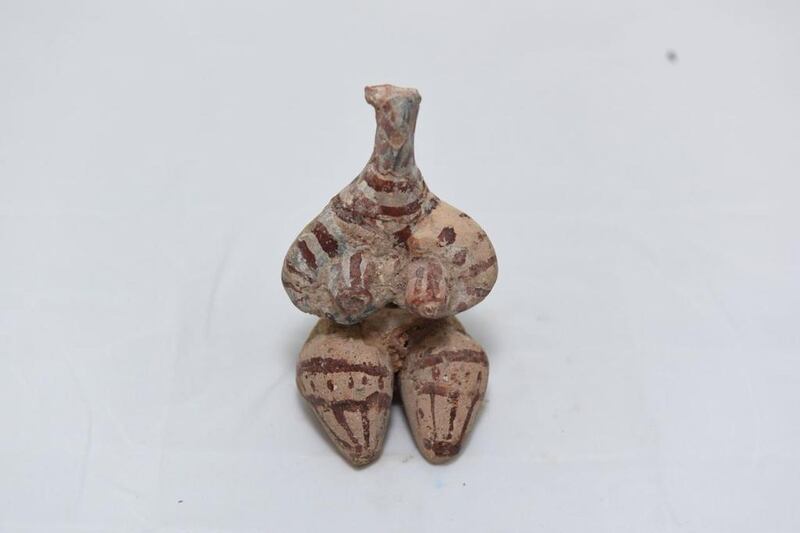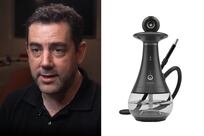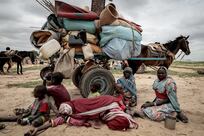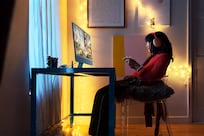LONDON // From the glories of ancient culture to darker shades of contemporary conflict, works by Iraq’s most influential artists are to go on display at a major European event expected to draw at least 500,000 visitors.
The National Pavilion of Iraq's exhibition, entitled Archaic, will be staged at the 57th Venice Biennale in May and feature artefacts spanning six millennia from the Neolithic Age to the Neo-Babylonian period alongside the works of eight modern Iraqi artists.
Apart from those recovered in recent years after being looted following the US-led invasion that toppled Saddam Hussein in 2003, the artefacts – loaned by the National Museum of Baghdad – will be leaving Iraq for the first time.
Their appearance at the prestigious Italian event will be accompanied by newly commissioned work by the Belgian Francis Alys on the subject of war and the artist.
Among the contemporary Iraqi figures represented in Venice will be Ali Arkady, a photojournalist who has covered the turbulent post-Saddam realities. Arkady has reported regularly from the front line since ISIL’s attacks began in 2014 and the display will include a collection of his latest photography from Mosul, where government forces have just begun a new phase of an operation intended to defeat the extremist group in its last Iraqi stronghold.
His images are arranged in three sections: illustrating how war affects soldiers, civilians and the land. The focus will be on the impact of conflict on migration and the continuing refugee crisis.
Details of the Iraq pavilion have been published by the Ruya Foundation for Contemporary Culture in Iraq, a non-profit, non-governmental organisation founded in 2012 with the aim of promoting the country’s art around the world.
Explaining the use of the term Archaic, the foundation describes a country "whose existing political, administrative, social and economic reality is arguably as archaic as its ancient heritage".
The curators, led by Tamara Chalabi, the foundation's Iraqi-Lebanese chairperson and co-founder and an authority on Middle Eastern art and culture, state: "In exploring Iraq's artistic heritage from the Neolithic Age to the present, Archaic will also explore the different ways in which Iraq's ancient past has affected its modern and contemporary visual languages, examining the opportunities and restrictions presented to the nation by its immense ancient inheritance, in the context of today's fragile reality."
Among 40 ancient objects that will be displayed in Venice are items from as long ago as the Halaf period (6,100–5,100BC) and the later Neo-Babylonian period (635–539BC).
The artefacts – made of stone, glass and clay – will range from such everyday objects as jugs, sieves and toys to cylinder and stamp seals, cuneiform tablets, medical objects, a musical instrument and figurines of animals, deities, people and boats.
They include items stolen in 2003 after Saddam’s forces tried to fight off advancing US troops from inside the museum. A US investigation discounted allegations that American soldiers were involved in the looting, and concluded that the thefts were carried out by different groups who entered the building before the US troops arrived there.
The full details of the looting remain mired in controversy and mystery, with the US military still criticised for failing to safeguard the treasures but insisting that it had higher priorities at a time when people were being killed in the conflict.
Thousands of items stolen from the museum never left Iraq and a large number of them, along with some objects that have turned up in the West, have been returned to the museum.
Not all of these will be taken to Italy for the Venice Biennale. But the exhibits will include a dove-shaped Babylonian stone weight measure and a clay figurine, dating from 5,000BC, appearing to depict a fertility goddess, both returned to Iraq from the Netherlands in 2010 under a directive from Interpol.
In selecting ancient artefacts for display, the curators have identified seven themes: water, earth, the hunt, writing, music, conflict and exodus.
Six of the eight artists to be showcased in Venice are still living – Sherko Abbas, Sadik Kwaish Alfraji, Luay Fadhil, Nadine Hattom and Sakar Sleman as well as Arkady. Most are creating new work for the event.
The other two artists whose work will be seen are Jewad Selim who died in 1961 and Hassan Shaker Al Said who passed away in 2004. Both are acclaimed pioneers of Iraq’s modern art tradition.
One exhibit will be The Hen Seller, a 1951 work by Selim, widely regarded as the father of modern Iraqi art. It has not been presented in public since its first showing in the 1950s.
The curators say many artists working in Iraq today “continue to abide by an orthodox aesthetic tradition that has been limited by mid-century education trends and the lack of cultural exchange in Iraq in recent decades”. The Ruya foundation sees one of its key roles as nurturing and promoting artists who break free of such constraints, which explains why video and photography will be represented alongside traditional paintings and sculptures.
The Vienna Biennale opens to the public on May 13 and will run until November 26.
foreign.desk@thenational.ae






